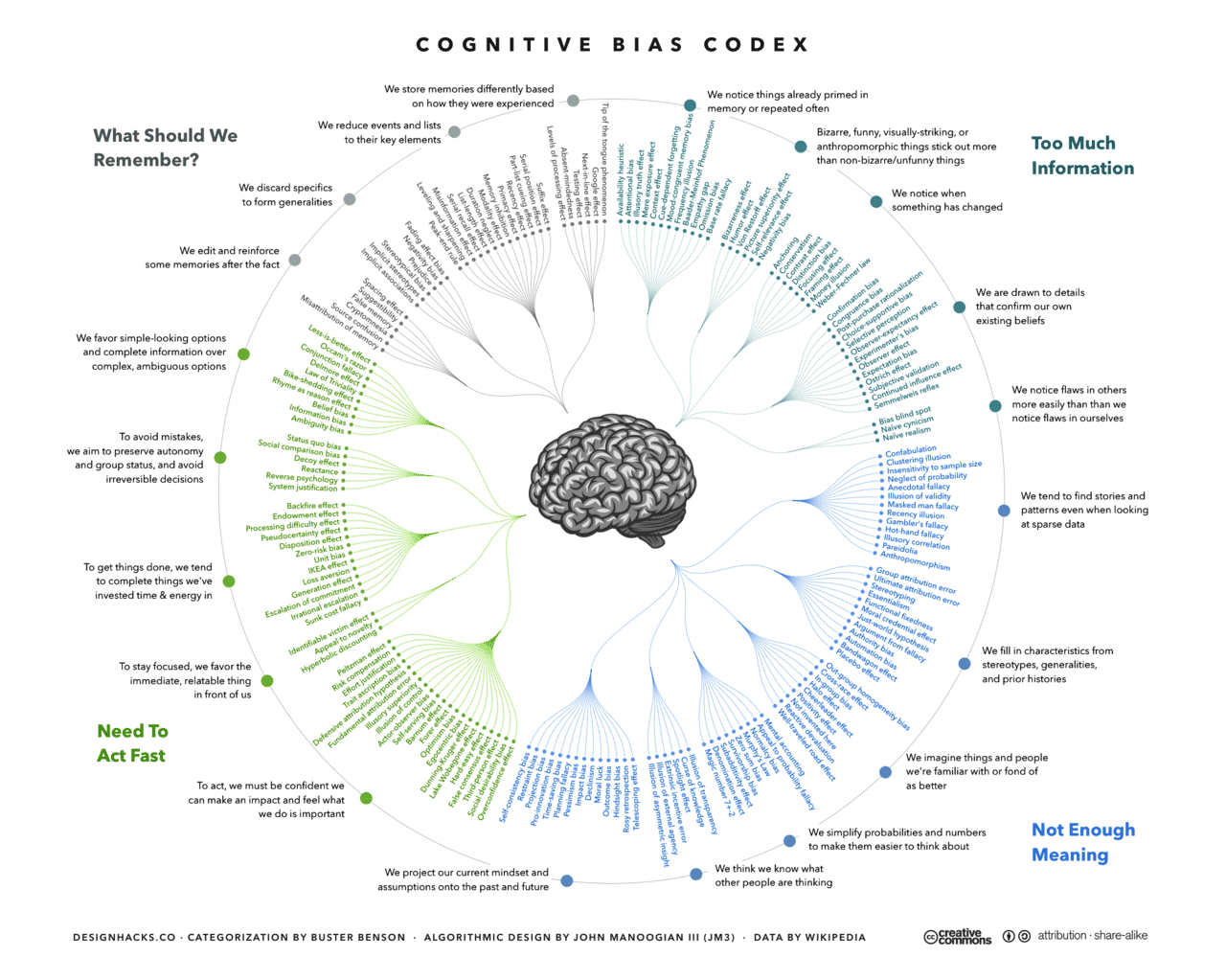Unconscious biases – the world in our heads
Unconscious biases can be translated in two ways: Most often it is translated as subconscious prejudices, but more apt is the term ” non-conscious preoccupation”. This translation better reflects that we are biased in our first judgement and assessment. Yet each of us is unconsciously biased in a different way because of our cultural background, upbringing, everyday interactions and accumulated experiences, and this is the actual world in our heads that we are extraordinarily comfortable with in our eyes.
Everyone has unconscious biases – that’s OK
The key to unconscious bias is to realise that you are biased. All of us, without exception, are biased, even if some say otherwise. It is perfectly okay that we have this biases. It makes life easier. In every moment we are confronted with over 10 million impressions. However, the brain can only process 40 of them. As a result, we make unconscious decisions and simplifications to deal with the situation at hand. In these moments, we act instinctively. 95% of all our actions are based on instincts – quick unconscious thinking and reflexes. The remaining 5%, on the other hand, are shaped by conscious decisions and thinking. But why is this so? Looking back into natural history and evolution, it quickly becomes clear why instinctive behaviour has paid off: Survival! The moment we are confronted with a dinosaur, we have to decide quickly whether we can win the fight with a spear or whether it is better to take flight. Accordingly, unconscious biases are not always bad, because they ensured our own safety.
The non-conscious preoccupation and its advantages
In the past, non-conscious preoccupation ensured survival. Today, this aspect is often greatly reduced, but some good can still be gained from this artefact for ensuring the survival of our ancestors: With the many impressions that our society holds for us at every moment, the instincts and thus the resulting unconscious biases help to reduce complexity. Everyday life is made much easier because, for example, gaps in knowledge can be filled from experience and quick decisions can also be made. Put a little differently: Unconscious biases help us to generate a certain stability in our lives (or even in our heads). Of course, there are not only advantages. In that case, everything would be a bit too simple. If we are not aware of our biases, no objective judgements or decisions can be made, which often also leads to misjudgements. Furthermore, a stronger expression of unconscious bias occurs in homogeneous groups and under pressure. This usually intensifies with advancing age.
The “Cognitive Bias Code”
Let’s dive a little deeper into the world of unconscious biases. There are a total of over 180 different biases to which we can succumb and new ones are added regularly. These 180+ unconscious biases can be divided into four groups, as outlined by John Manoogian III in the “Cognitive Bias Codex”¹:
Since we are constantly developing, new unconscious biases are constantly being added to the “Cognitive Bias Codex”. For example, the “Google Bias” is a recent bias. This shows that we no longer need to remember certain things because we can simply look up or search for this knowledge on the internet. Another bias is the “IKEA bias”. Based on this, we are more likely to trust things built with our own hands than to buy something ready-made. Thus, in the code presented by John Manoogian III, there is a very complete list of unconscious biases. Of course, not every single one of us carries all of these biases, but only a selection of them. One’s biases depend, among other things, on our daily environment and cultural background.
The best known and most frequently encountered biases, especially in the professional environment, are e.g.
- Mini-Me effect – people who are similar to me are preferred,
- Status quo effect – the known, current situation is preferred,
- Stereotype effect – certain characteristics are assigned based on appearance,
- Herd effect – because many people do something, it is the right thing to do,
- Group effect – people who belong to the same group are preferred,
- Confirmation effect – I seek confirmation for my opinion and thus it is the right opinion.
In the work environment, unconscious biases have another and quite far-reaching effect. Among other things, they prevent diversity and inclusion when hiring job applicants. In the private sphere, too, our own biases or those of others can stand in our way. For this reason, it is important to be aware of being biased.
Nudging – Taking action against one’s unconscious biases!
What can each of us now do about our own unconscious biases? In the first step we have already accepted that we are biased. Now comes “nudging”. The principle of nudging was set up by Richard Thaler (winner of the Nobel Prize in Economics 2017). It states that small nudges eliminate one’s own blind spots of bias and build behavioural bridges. One such nudge in a poorly working team in a professional environment is, for example, the team breakfast or department lunch. Each team member brings something for the common meal that is typical for his or her culture or perhaps even his or her favourite food. This results in many lively conversations, people get to know each other better and biases are reduced. Another example is the “get-to-know-you walk”. Here we can get to know a new colleague or a new association member during the walk and consciously expand the world in our minds. There are many such nudges, which Richard Thaler summarised for overcoming personal biases in his book “Nudge”.²
Conclusion
Since 95% of our actions are instinctive, this main part of our thinking and acting is also unconscious. Consequently, each of us is unconsciously biased. If we become aware of the unconscious biases we succumb to, where our own blind spots are, we can consciously influence our own actions through “nudging”. This does not have to be exhausting, it can also be fun. With a nudge, we try something new and who knows if we will give someone else great pleasure.
Notes:
[1] the Cognitive Bias Codex
[2] Richard Thaler: Nudge

Dr. Miriam Kunze
Miriam Kunze decided to work in research and development in the field of batteries after completing her chemistry degree and doctorate, and has remained true to this for 17 years in various functions. She started with university research and then switched to industry. There she started in the field of batteries in specific product and material development and then moved to battery-related component development at a Tier 1 company. Today, Miriam Kunze is a team leader at VW in the field of batteries. This position of team leader prompted her to deal intensively with diversity, inclusion and the unconscious biases.
